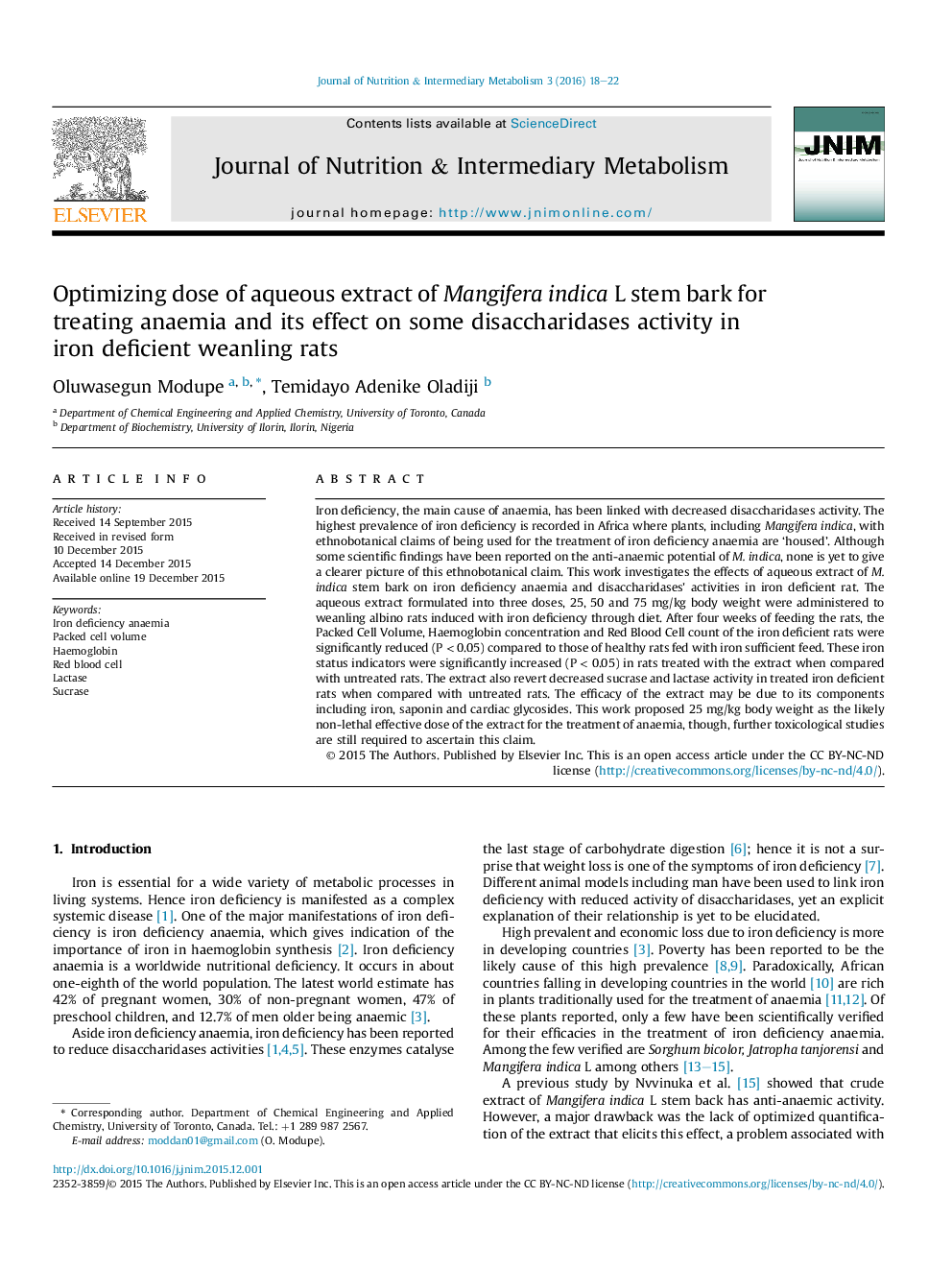| Article ID | Journal | Published Year | Pages | File Type |
|---|---|---|---|---|
| 2686789 | Journal of Nutrition & Intermediary Metabolism | 2016 | 5 Pages |
Iron deficiency, the main cause of anaemia, has been linked with decreased disaccharidases activity. The highest prevalence of iron deficiency is recorded in Africa where plants, including Mangifera indica, with ethnobotanical claims of being used for the treatment of iron deficiency anaemia are ‘housed’. Although some scientific findings have been reported on the anti-anaemic potential of M. indica, none is yet to give a clearer picture of this ethnobotanical claim. This work investigates the effects of aqueous extract of M. indica stem bark on iron deficiency anaemia and disaccharidases' activities in iron deficient rat. The aqueous extract formulated into three doses, 25, 50 and 75 mg/kg body weight were administered to weanling albino rats induced with iron deficiency through diet. After four weeks of feeding the rats, the Packed Cell Volume, Haemoglobin concentration and Red Blood Cell count of the iron deficient rats were significantly reduced (P < 0.05) compared to those of healthy rats fed with iron sufficient feed. These iron status indicators were significantly increased (P < 0.05) in rats treated with the extract when compared with untreated rats. The extract also revert decreased sucrase and lactase activity in treated iron deficient rats when compared with untreated rats. The efficacy of the extract may be due to its components including iron, saponin and cardiac glycosides. This work proposed 25 mg/kg body weight as the likely non-lethal effective dose of the extract for the treatment of anaemia, though, further toxicological studies are still required to ascertain this claim.
